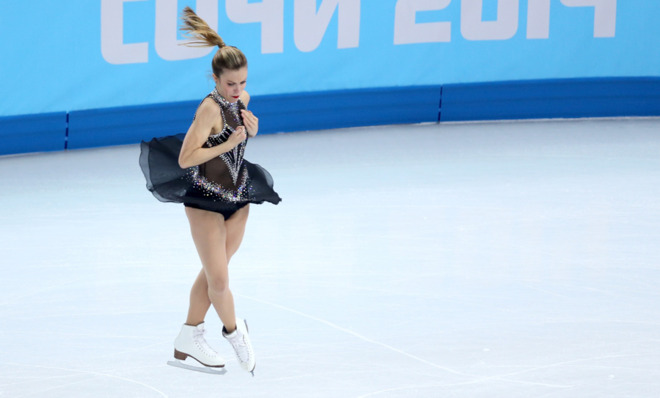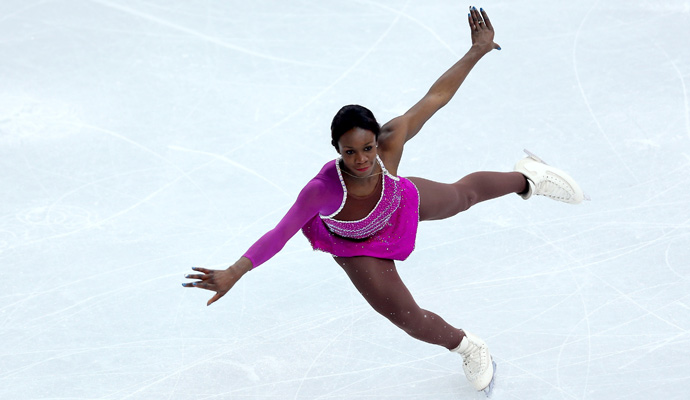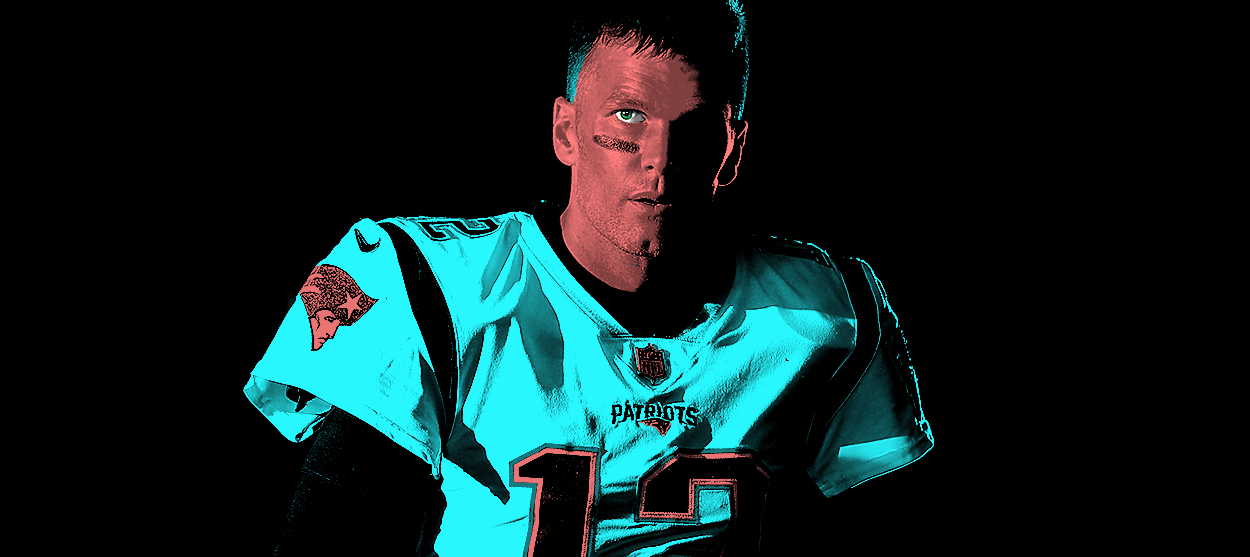Peculiar figure skating terms: Explained
Let's be honest: You have no idea what the difference between a Lutz and an Axel is


Triple Axel! Quad Salchow! Triple Lutz with triple loop in combination!
If you, like most people, only watch figure skating about once every four years, you may wish you knew what the difference is between the jumps — and why they have those bizarre names. Well, today is your lucky day.
On the face of it, a skating jump may seem like strapping two knives to your feet, spinning in the air, and landing on one foot going backwards. This is almost accurate. However, skate blades are different from knives in an important way: Each blade has two edges, not one.
The Week
Escape your echo chamber. Get the facts behind the news, plus analysis from multiple perspectives.

Sign up for The Week's Free Newsletters
From our morning news briefing to a weekly Good News Newsletter, get the best of The Week delivered directly to your inbox.
From our morning news briefing to a weekly Good News Newsletter, get the best of The Week delivered directly to your inbox.
Everything in figure skating is about these edges. When you take off for a jump, you're not skating in a straight line. You're always on a curve, and on one foot. That means you're always on one edge. And which edge you take off from determines what kind of jump it is. That and whether you use the toe pick on the other skate to help you.
The edge you land on doesn't determine the jump. Why not? Because you always land on the same edge. If (like most skaters) you rotate counterclockwise when you jump, you land going backward on your right foot on the outside edge, which is the right side of the blade. Mechanically it's the only edge you can actually land on, given the direction you're rotating, the fact that you're going backward when you're landing, and your quite reasonable desire not to wipe out all over the ice.
Why do you land skating backward? Because if you land skating forward, an awkward scene will ensue, possibly involving blood. Part of it is because of what your body has to do to stop the spinning. Part of it is that figure skate blades have tails at the back and curves with picks at the front. The tail helps keep you from falling; the curve and toe pick would help you fall.
So… which jump has which take-off, and why are they called what they're called? Here are your answers. Remember that we're assuming that you rotate counterclockwise. For those jumpers who rotate the other way, just take the mirror image of everything. And what about all the "double, triple, quad" stuff? That's how many times you rotate in the air before you land. There are single jumps, too, which have just one rotation, but you mostly don't see those at the Olympic level… not intentionally, anyway.
A free daily email with the biggest news stories of the day – and the best features from TheWeek.com
Loop
If you take off from skating backwards on the outside edge on your right foot (that's the right side, the same edge you land on), it's called a loop. Why a loop? Because it's reminiscent of the loop compulsory figure. Compulsory figure? Skaters used to have to trace patterns on the ice as part of their training and competitions: loops, eights, and so on. That's why it's called figure skating. Those aren't required anymore. This jump is also called a Rittberger in Europe, after Werner Rittberger, who is credited with inventing it.
Toe loop
A toe loop is like a loop, except you dig in the toe pick of your left skate to help (which means your free leg starts behind you, not in front as with the loop). The toe loop and the Salchow are the two easiest jumps (not counting a waltz jump, which only has a half rotation). This jump has also been called a cherry flip. Like a flip (see below), it's a toe jump — i.e., it uses the toe pick.
The loop and the toe loop are the only jumps that can be the second jump in a combination, because in order for it to be a combination, you have to take off from the same edge you just landed on, and the loop and the toe loop are the two that do.

Salchow
This is probably the most-noticed jump name. It sounds so awkward — "sow cow"? It's named after its inventor, Ulrich Salchow, a Swedish skater. For this jump, you take off from the inside (right) edge of your left skate, and you don't use your toe pick. So the curve you're skating in is rotating your body the same way as the jump will, and you start by swinging your right leg around in front as you take off from your left foot.
Flip
A flip is not a backflip. (Backflips are banned in competition.) A flip takes off from the same edge as a Salchow, but you use the toe pick on your right skate. That makes a big difference because your right skate is actually the last thing touching the ice as you take off. The flip was for a time called a Mapes jump, after Bruce Mapes (in roller skating they call a toe loop a Mapes).
Lutz
A Lutz also takes off from the left foot and uses the toe pick, but it takes off from the outside (left) edge. That means you're curving one way and then rotating the other — it's a "counter-rotated" jump, which makes it more difficult. If you see an athlete skating a long way backwards on the left foot with a very shallow clockwise curve, you can bet they're about to do a Lutz. Sometimes a skater will cheat and curve the other way just before jumping, making it a flip of sorts. This is called doing a flutz.
There is no version of the Lutz without the toe pick. Too difficult.
Walley
Never heard of a Walley? That's because it's only used as a connecting element between other things. It's too difficult and awkward to be done with more than one rotation. It's another counter-rotated jump, you see: You come in on an inside (clockwise) curve on your right skate, and then when you jump you have to turn your whole body the other way. If you use your toe pick to help you, it's a toe Walley. It's named after American skater Nate Walley, who may have invented it. In Britain, it's sometimes called a Pat Low jump, because not everyone agrees on who to blame for it.
Axel
This jump is also named after its inventor: Axel Paulsen, a Norwegian figure skater and speed skater. Did you notice how it's the only jump that takes the first name of its inventor? That's fitting, because it's also the only jump that takes off forwards. You skate forward on your left skate on the outside edge (so in a counter-clockwise circle), then swing your right leg forward and rotate in the air. A single Axel is one-and-a-half turns; a double, two-and-a-half; et cetera. An Axel that only goes a half a turn — just take off, go 180˚ in the air, and land — is called a waltz jump.
**
That's the whole list of jumps you'll see in Olympic competition. There are no other jumps that take off forward — if they could be done, they would be.
But do you ever wonder how the skating commentators (and any skaters in your life) seem to know what jump is coming well before the take-off? It's because there are different things you do to get ready for the different jumps. That's a whole other article.
One more thing: Are you wondering why skaters will go for a quad and risk falling rather than safely land a triple? It's because if you rotate all the way and land on the edge and then fall once you've landed, it's a one-point deduction (plus you lose some style points), but the point difference between a triple and a quad is about six points (depending on the jump).
Got all that? Good! There will be a test. It's called the ladies' free skate (a.k.a. the women's long program), and it's on Thursday, February 20, at 7 p.m. … Sochi time.
James Harbeck is a professional word taster and sentence sommelier (an editor trained in linguistics). He is the author of the blog Sesquiotica and the book Songs of Love and Grammar.
-
 The hottest Super Bowl ad trend? Not running an ad.
The hottest Super Bowl ad trend? Not running an ad.The Explainer The big game will showcase a variety of savvy — or cynical? — pandemic PR strategies
-
 Tom Brady bet on himself. So did Bill Belichick.
Tom Brady bet on himself. So did Bill Belichick.The Explainer How to make sense of the Boston massacre
-
 The 13 most exciting moments of Super Bowl LIII
The 13 most exciting moments of Super Bowl LIIIThe Explainer Most boring Super Bowl ... ever?
-
 The enduring appeal of Michigan vs. Ohio State
The enduring appeal of Michigan vs. Ohio StateThe Explainer I and millions of other people in these two cold post-industrial states would not miss The Game for anything this side of heaven
-
 When sports teams fleece taxpayers
When sports teams fleece taxpayersThe Explainer Do taxpayers benefit from spending billions to subsidize sports stadiums? The data suggests otherwise.
-
 The 2018 World Series is bad for baseball
The 2018 World Series is bad for baseballThe Explainer Boston and L.A.? This stinks.
-
 This World Series is all about the managers
This World Series is all about the managersThe Explainer Baseball's top minds face off
-
 Behold, the Bud Selig experience
Behold, the Bud Selig experienceThe Explainer I visited "The Selig Experience" and all I got was this stupid 3D Bud Selig hologram



